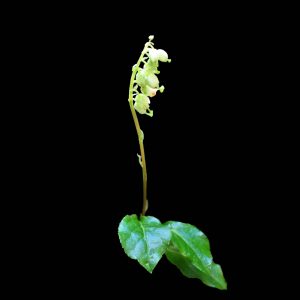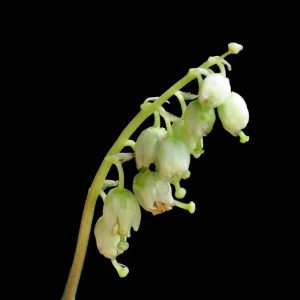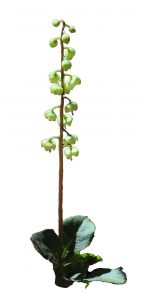I have been hiking the Catalina mountains for thirty-six years. Most of the hikes for the first seventeen were done as a means of covering the ground fairly rapidly, with occasional stops to take a landscape photograph. That all changed in 1999, when I started taking pictures of flowers too. This has meant traveling much more slowly, and has rewarded me with a growing enjoyment of plants. Seven years ago I wrote a guide to the mountain wildflowers in this part of Arizona. Since then, I occasionally come across one I have never met before, and that is always a treat, though a little discouraging since it is too late to include it in the book.
My son, Owen, and I are putting finishing touches on a new book, Small Wonders, which includes many plants that did not make it into the first flower book, some because they seemed too insignificant, others because I had not met them yet. Just recently I met a new one, too late for the book in progress. Ah well, the beauty of this kind of search is that you never come to the point where you have seen it all.
After three and a half months with no rain here, we had a downpour on Saturday, June 16. This was the day when our son, Alan, and I had planned to go up into the mountains so that I could photograph a flower that had not been recorded in this mountain range for over a hundred years. We saw it on our plant walk about a week ago, but I did not have my close-up camera to get a good picture. Besides the flower buds were not yet open.
In just a few hours two and a half inches of rain drenched our property, and obscured our view of the mountains. We almost gave up hope of going up the mountain that day. And then, in the middle of the afternoon, we saw our chance. We drove up to Turkey Run, walked the trail under a clear and cool sky, and I got the pictures shown below.
This is a member of the Ericaceae – the Heather Family. It is related to Pyrola, and when I first saw it I thought it was Pyrola elliptica. We noticed it growing in a bed of moss. Its name, Sidebells, describes the fact that the flowers are all on one side of the stalk. This is also the meaning of the botanical name, Orthilia secunda.
The plant on the right is Pyrola Elliptica, which has flowers all around the stalk.




WOW! What a find and how beautifully shown in your photographs. Isn’t nature grand and always filled with surprises if we are willing to look….Can’t wait to get a copy of your new book and pleased to hear you have put Owen to work on it… 😉
BLESSINGS
Almost like a lily of the valley, although the leaves are different. What an exquisite little flower!
You amaze me, Frank. You see the beauty in the tiniest flowers. We should all slow down and look for all the beauty and goodness in the world. Too bad we hear so much negative news. I am going to do better!
Darling delicate small wonder